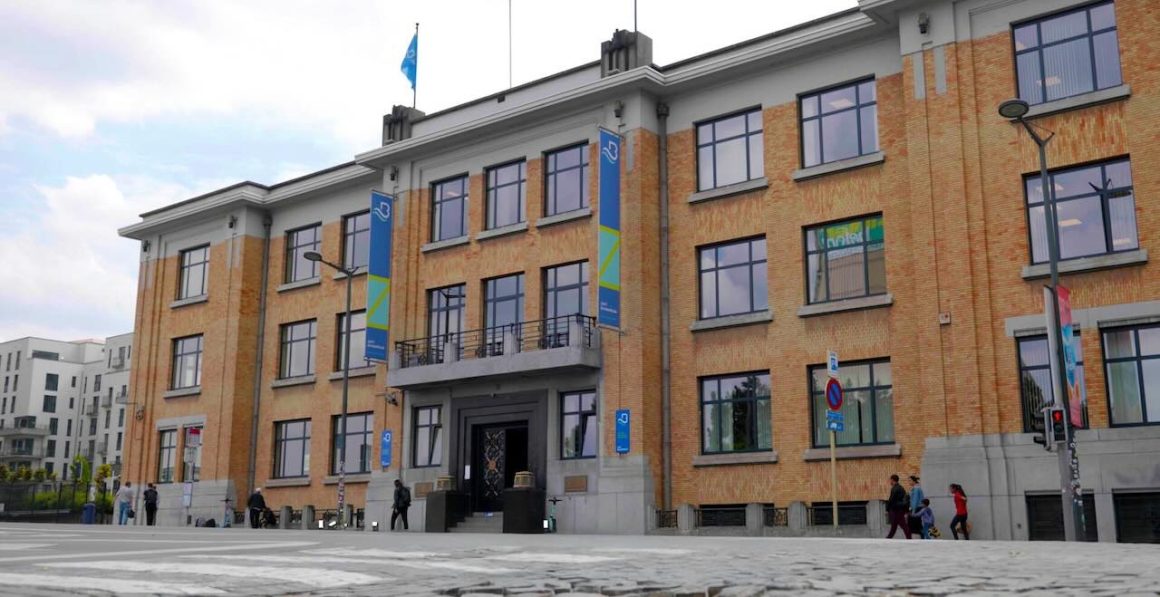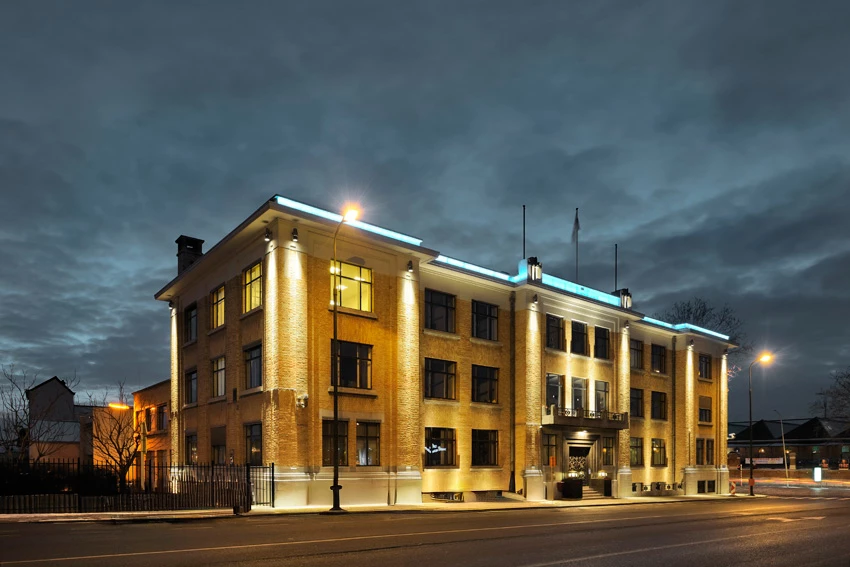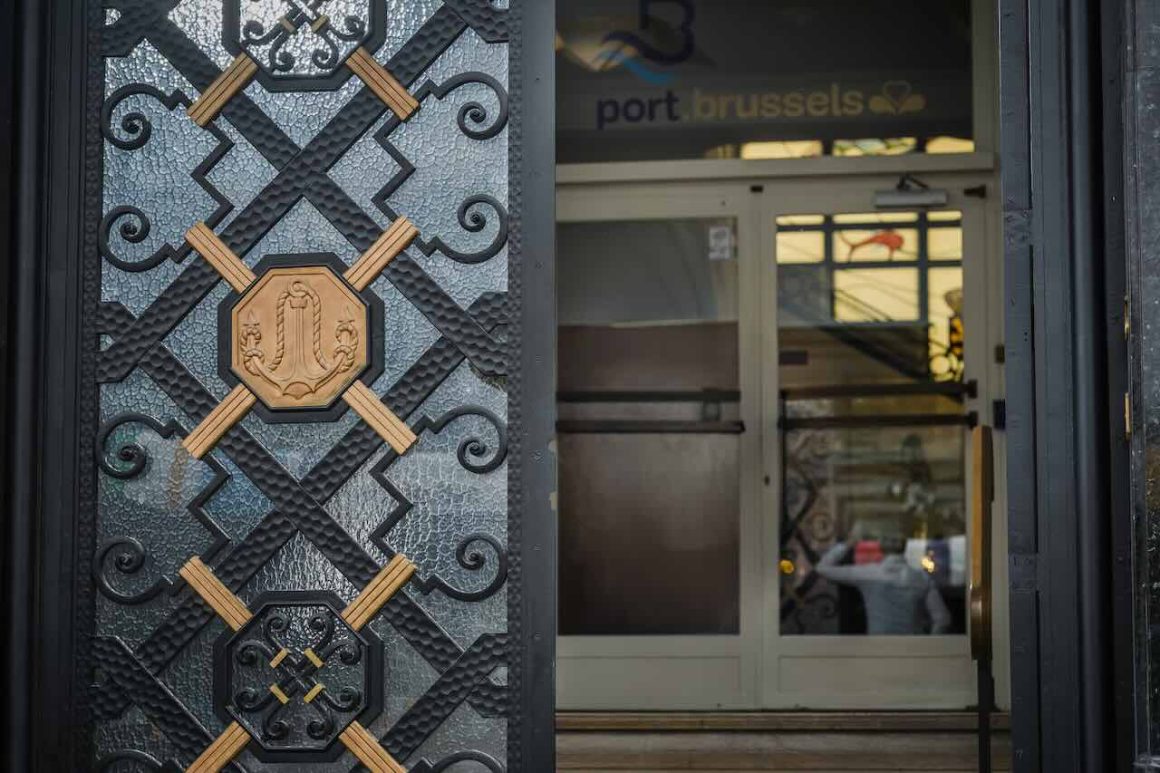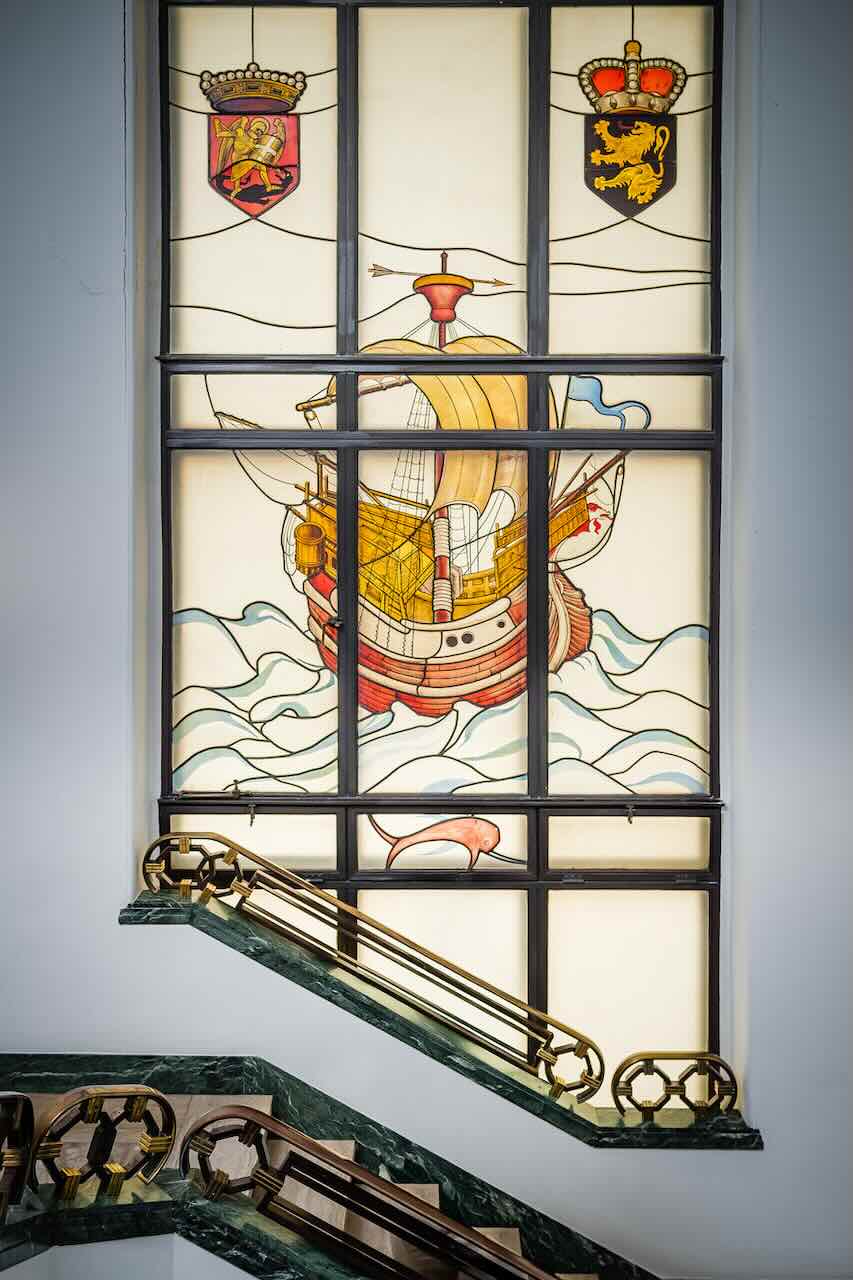Did you know that the administrative headquarters of the Port of Brussels, built in the late 1930s, is a stunning example of Art Deco? The combination of orange-red brick and blue stone makes it a true eye-catcher. Architecture buffs and curious city explorers should mark their calendars: as part of Art Deco Year 2025 and upcoming Heritage Days, the Port of Brussels invites the public to discover the building on 21 September.

Still in use today, the building exceptionally opens its doors to reveal some hidden treasures: frescoes depicting life in the former intra muros port, an impressive stained-glass window by master glassmaker Colpaert, and the magnificent Board Room.
In the framework of the Art Deco Year 2025 and the 37th edition of the Heritage Days, which are this year dedicated to Art Deco, the roaring twenties and the stock market crash, the Port of Brussels will exceptionally welcome the public inside. Visitors will also be able to discover photographs of the Port of Brussels by Pierre Jouve and Marcel Vanhulst.
The administrative headquarters of the Port of Brussels, built in the late 1930s, is a stunning example of Art Deco. The combination of orange-red brick and blue stone makes it a true eye-catcher.
A unique opportunity to experience from the inside an emblematic place where heritage, architecture and contemporary port activity come together.
When: Sunday 21/09/2025, from 10:00 to 16:00h
Where: Place des Armateurs 6, 1000 Brussels


Don’t miss this exclusive date with port history and future!
A Bit of History
At the end of the 1930s, the public limited company Société du Canal et des Installations Maritimes de Bruxelles (the company that managed the Brussels–Antwerp canal before the creation of the Port of Brussels in 1993) decided to construct a new building for the port services. The plans were drawn up in 1937, and the building permit was granted in July 1938.

This fine Art Deco building has three floors. On the ground floor there used to be, along a long corridor, the collection and accounting offices, a waiting room and an exhibition hall, offices for port officers, the statistics department, and a concierge’s residence. Frescoes depicting the activities of the old intra muros port decorate part of the walls. The monumental staircase is illuminated by a stained-glass window by J. Colpaert. On the upper floor were the management offices, where today the staff of the Port of Brussels still work. On the first floor there is a very beautiful council chamber, restored in 2003 with respect for the Art Deco style.
From the outset, the decision was made to preserve the original Art Deco character of the room. Many elements were in fact executed in this style: the chandeliers, the panelling, the fireplace, and the furniture. Although the whole showed some signs of decay, it still radiated character. The restoration aimed to respect the spirit of the time as much as possible, mainly to preserve the unity between the hall, the staircase, and the façade of the building, which together form an Art Deco ensemble of exceptional quality.
One of the requirements was to integrate modern comforts—such as air cooling and sufficient ventilation—as well as certain contemporary functions, without compromising the existing and original Art Deco. In addition to technical upgrades and the restoration of existing elements such as the balcony tiles, panelling, parquet flooring, fireplace, and frescoes, the main challenge was to determine the shapes and materials for the new furniture, such as the table. Ultimately, the solution was a coherent ensemble: a conference table with chairs and wall coverings modelled after the originals, mainly crafted from exotic woods closely associated with Art Deco. This contrasts with the oak décor, which is lighter in tone, creating a warm atmosphere. For the table design, inspiration was drawn from the large tables of that era—rounded corners, pedestals connected to consoles. Rosewood, mahogany (sipo), bird’s-eye maple, and wenge—woods inseparably linked with Art Deco—complete the ensemble. The panelling, walls, and curtains in light beige and yellow give the whole a bright and welcoming ambiance.
Info & visuals: Port of Brussels




